Muscular Tissue
Muscular tissues are essential components of the human body responsible for movement and maintaining posture. There are mainly three types of muscles: Skeletal Muscles, Smooth Muscles, and Cardiac Muscles. Skeletal muscles are responsible for connecting bones to tendons and enabling voluntary functions like walking and jumping. Smooth Muscles are found in organs like the stomach and intestines and control involuntary functions like digestion. Cardiac Muscles are uniquely present in the heart and are responsible for pumping blood throughout the body.
Muscles work by contracting and relaxing, allowing them to exert force and generate movement. Skeletal muscles operate consciously, responding to signals from the nervous system, while smooth and cardiac muscles function involuntarily, responding to automatic signals. Regular exercise helps maintain muscle health and strength. Overall, muscular tissues contribute to the body’s structural support, locomotion, and vital physiological processes.

Types of Muscular Tissues
There are mainly three types of muscular tissues namely: Skeletal Tissues, Smooth Tissues, and Cardiac Tissues. All these tissues have been briefly discussed below:
Skeletal Muscles
- Location: Skeletal muscles are attached to the bones.
- Functions: The functions of skeletal muscles are that they enable voluntary movements like walking or cycling.
- Control: Skeletal muscles help in voluntary control by the nervous system.
Smooth Tissues
- Location: The smooth muscles are found in the walls of internal organs (examples include: the stomach, large intestine, and small intestine).
- Functions: These smooth muscles are responsible for involuntary contractions to control organ activities like digestion.
- Control: Involuntary, regulated by the atomic nervous system.
Cardiac Tissues
- Location: The cardiac Muscles are exclusively present in the heart.
- Functions: Cardiac muscles facilitate the pumping action of the heart.
- Control: Involuntary, but has a unique rhythmic contraction regulated by the heart’s own electrical system.
Nervous Tissues
Nervous tissue is like the body’s communication network. It is a crucial component of the body responsible for transmitting and processing information. It comprises specialized cells called neurons, which act as messengers in the nervous system. This network comprises two main types of cells namely: Neurons/ Nerve Cells and Neuroglia cells. Neurons are messengers that transmit signals, like electrical messages, throughout the body. They can be considered as information couriers. Neuroglial cells are like the support team, as they assist neurons and ensure that everything runs smoothly. The nervous tissue is organized into the brain, spinal cord, and peripheral nerves, forming the central and peripheral nervous systems. Overall, nervous tissue enables sensory perception, motor control, and cognitive functions, playing a pivotal role in coordinating bodily activities.
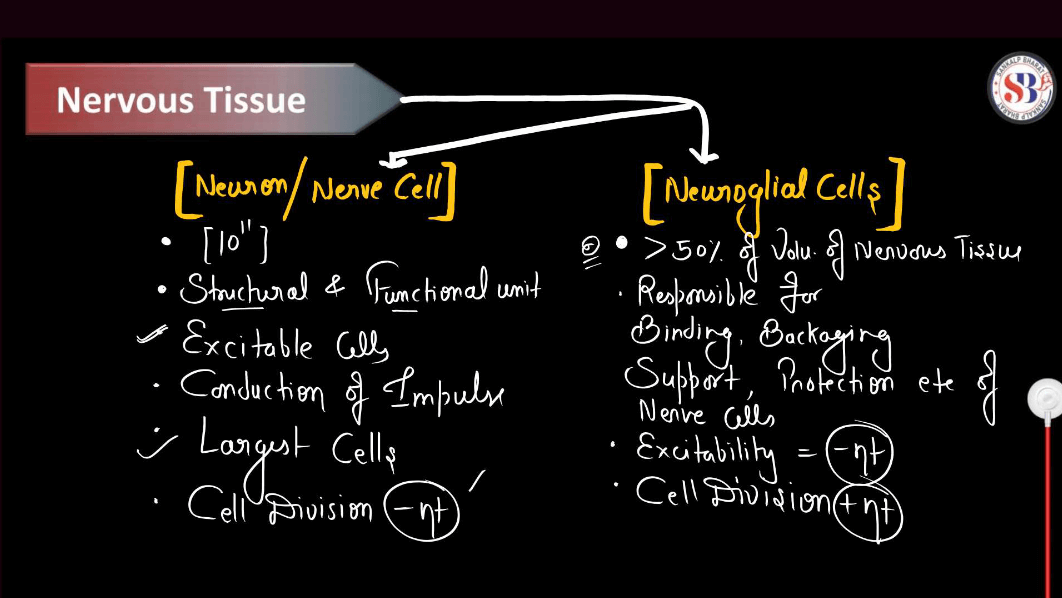
Types of Nervous Tissues
There are mainly two types of Nervous Tissues, which are typically named: Neurons/ Nerve cells and Neuroglia cells. Both types of nervous tissues work together to ensure the proper functioning of the nervous system.
| Different Types of Nervous Tissues | |
| Types | Description |
| Neurons | The neurons are the largest cells in the human body. These are the primary cells responsible for transmitting electrical signals in the nervous system. |
| Neuroglia (or Glial Cells) | These support cells assist and protect neurons, providing structural and nutritional support. |
Cockroach
Cockroaches are insects that have been around for millions of years, known for their adaptability and resilience. These critters are typically brown or black and have a flat, oval-shaped body with long antennae. They are excellent scavengers, feeding on a variety of things like crumbs, garbage, and even decaying matter. Cockroaches are nocturnal, preferring to come out at night to search for food and water. One remarkable aspect of these insects is their ability to survive in diverse environments, from homes to sewers.
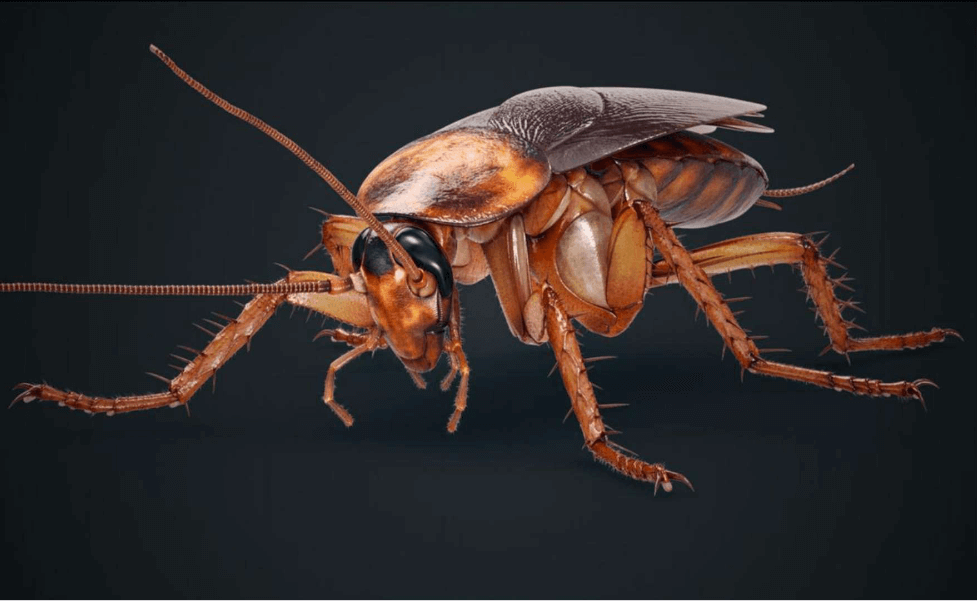
Cockroaches reproduce quickly, and their populations can grow rapidly if not controlled. They have a tough exoskeleton, which provides protection and can even regrow lost body parts. While some people find them unpleasant due to their association with unsanitary conditions, cockroaches play a role in nature by aiding in decomposition. Effective pest control measures are important to manage their presence, ensuring a clean and healthy living environment.
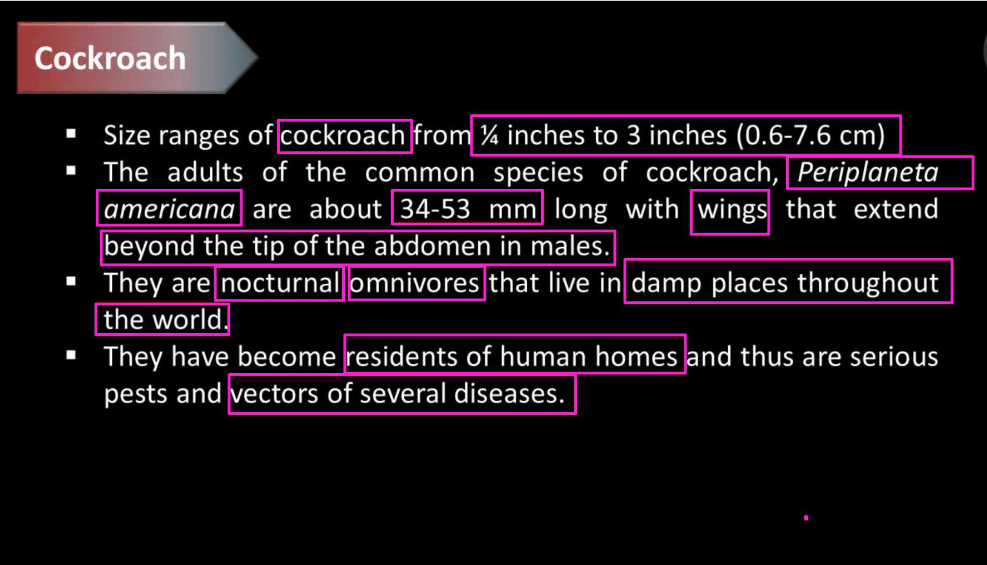
Exoskeleton
The exoskeleton of a cockroach is like its protective outer armor. Imagine it as a hard shell that covers the cockroach’s body, providing support and defense. This exoskeleton is made of a substance called chitin, giving it strength and durability. As the cockroach grows, it faces a challenge – the exoskeleton doesn’t stretch. So, to accommodate its increasing size, the cockroach periodically sheds this shell through a process called molting. Once the old exoskeleton is shed, the cockroach emerges with a softer one, which eventually hardens to continue safeguarding its body. This adaptive mechanism helps the cockroach thrive in its environment.
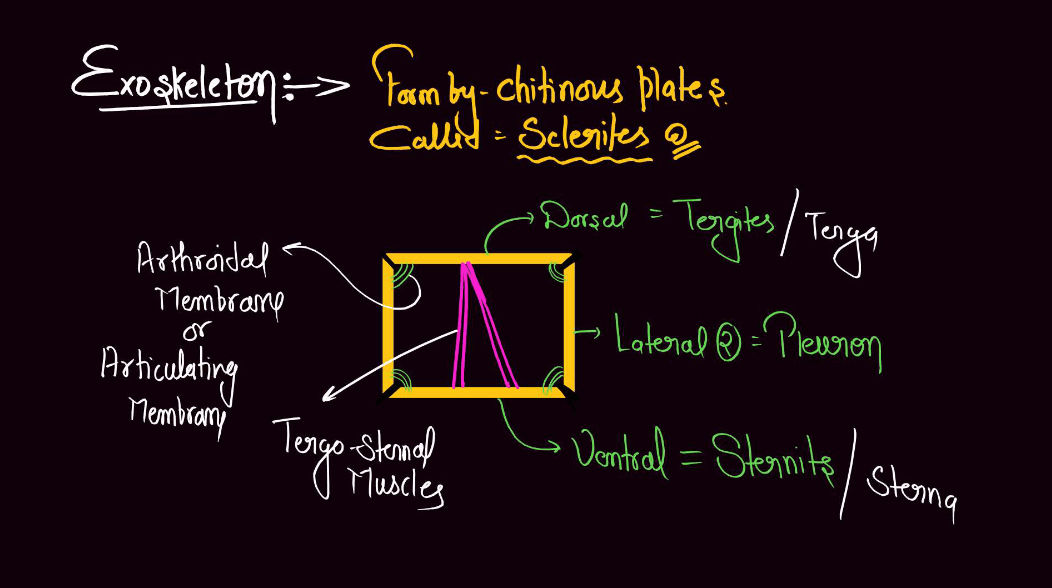
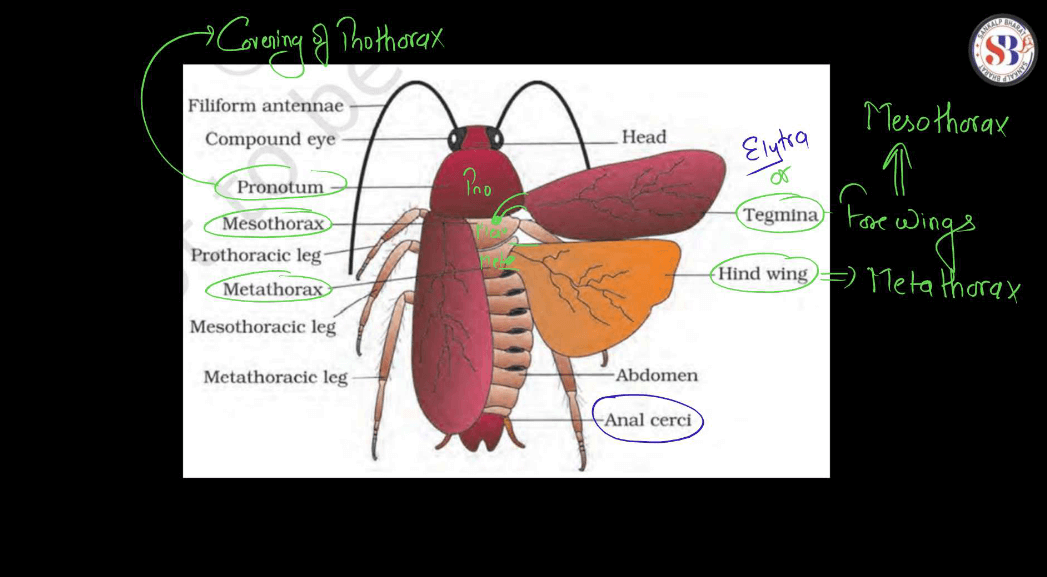
Body Segments of Cockroach
A cockroach’s body is divided into three main segments: Head, Thorax, and Abdomen. This segmented structure provides flexibility and facilitates the cockroach’s agile movement.
- Head: The head of the cockroach contains sensory organs like antennae and compound eyes.
- Thorax: The thorax of the cockroach is divided into three segments. The legs are attached to each thoracic segment. Wings (if present) are also attached to the thorax.
- Abdomen: The abdomen is the hindmost segment of the cockroach’s body. Houses vital organs, including those for digestion, reproduction, and excretion. The abdomen of the cockroach’s body provides flexibility for agile movement.
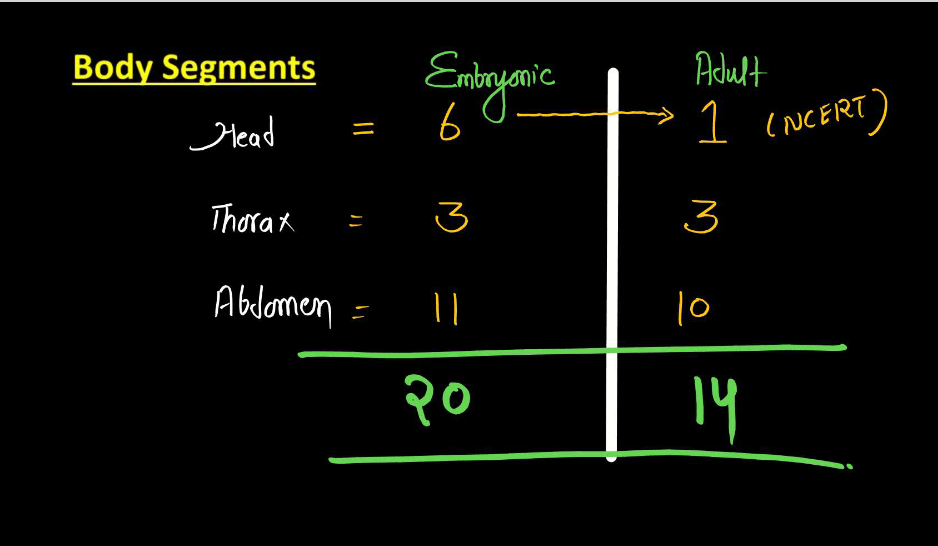
Head
The head part of a cockroach is a complex structure housing vital sensory organs and feeding apparatus. It features two large compound eyes, each composed of numerous tiny lenses for detecting light and movement. Additionally, cockroaches have a pair of antennae that serve as highly sensitive touch and smell receptors. The mouthparts consist of the mandible for chewing food and the labrum and maxillae for manipulating and processing it. This intricately designed head enables cockroaches to navigate their surroundings, locate food, and survive in various environments.
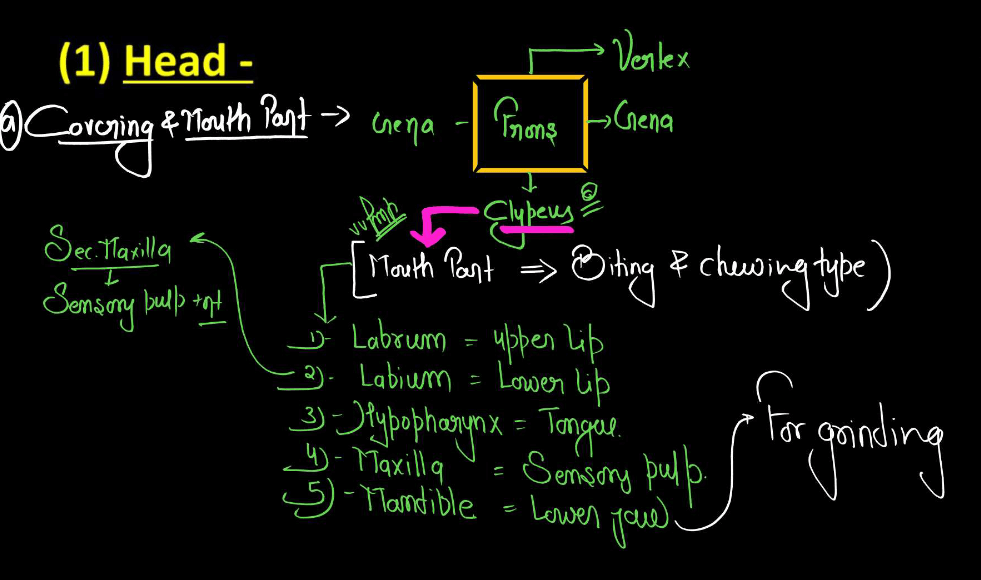
Parts of the Head of Cockroach
The head of a cockroach consists of several parts, including eyes, mouthparts, antennas, and many more. All these components collectively contribute to the cockroach’s sensory perception, feeding, and navigation.
- Eyes: Cockroaches generally have large compound eyes that allow them to detect movement and light.
- Antennae: These sensory organs help cockroaches navigate their surroundings and detect chemicals in the air, aiding in locating food and mates.
- Mouthparts: The mouthparts of a cockroach include mandibles for chewing food and maxillae and labium for manipulating and processing the food.
- Labrum: This is a plate-like structure that covers the mouthparts and assists in food ingestion.
- Clypeus: The clypeus is a shield-like structure above the mouthparts, helping protect them.
- Ocelli (Simple Eyes): Some cockroach species have simple eyes called ocelli, which can detect changes in light but are not as complex as compound eyes.
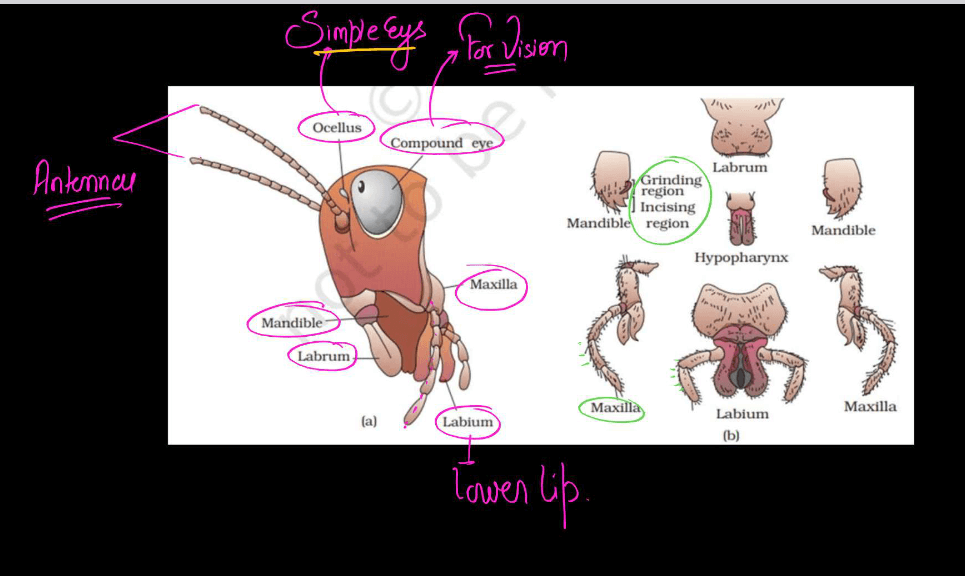
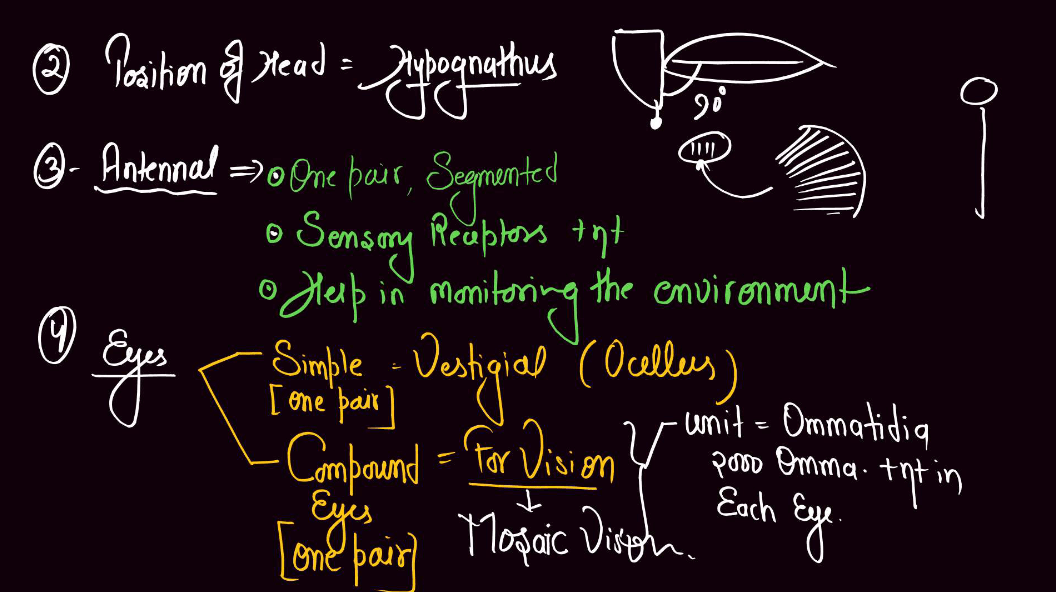
Thorax
The thorax of a cockroach is like its body’s bustling control center, nestled between the head and abdomen. The Thorax of a cockroach is further divided into three parts: the Prothorax, Mesothorax, and Metathorax – it’s the powerhouse for the insect’s six legs and wings headquarters. The legs, three pairs in total, are securely fastened to each section, turning the thorax into a biomechanical marvel. Now, here’s the cool part – the mesothorax are the designated platforms for the cockroach’s wings. These wings are the ticket to airborne adventures. So, whether the cockroach is scuttling around on its legs or taking flight, the thorax is the epicenter of movement, making it a vital element in the cockroach’s impressive adaptability to diverse environments.
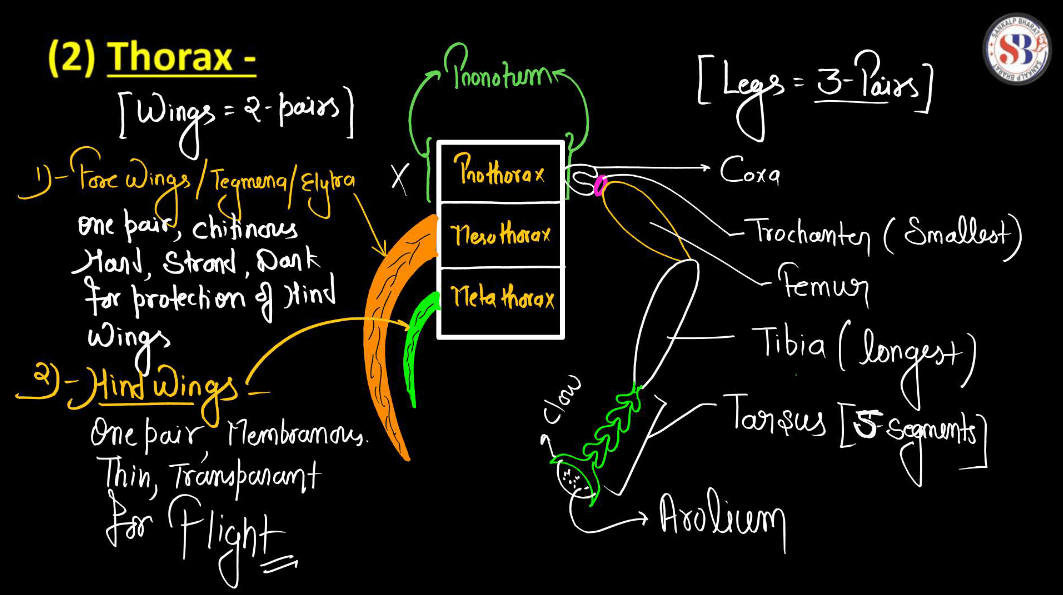
Abdomen
The abdomen of a cockroach is its hindmost body part, following the thorax. This segment plays a crucial role in Digestion, Reproduction, and Respiration. Comprised of several segments, the abdomen houses vital organs like the digestive system, reproductive organs, and part of the respiratory system. It lacks appendages like legs or wings, focusing on internal functions. The spiracles, tiny openings on the abdomen’s sides, facilitate air intake for Respiration. Additionally, the abdomen contains reproductive structures, with females having an ovipositor for laying eggs. Overall, the abdomen is essential for the cockroach’s internal processes, ensuring its survival, Reproduction, and adaptation in its environment.
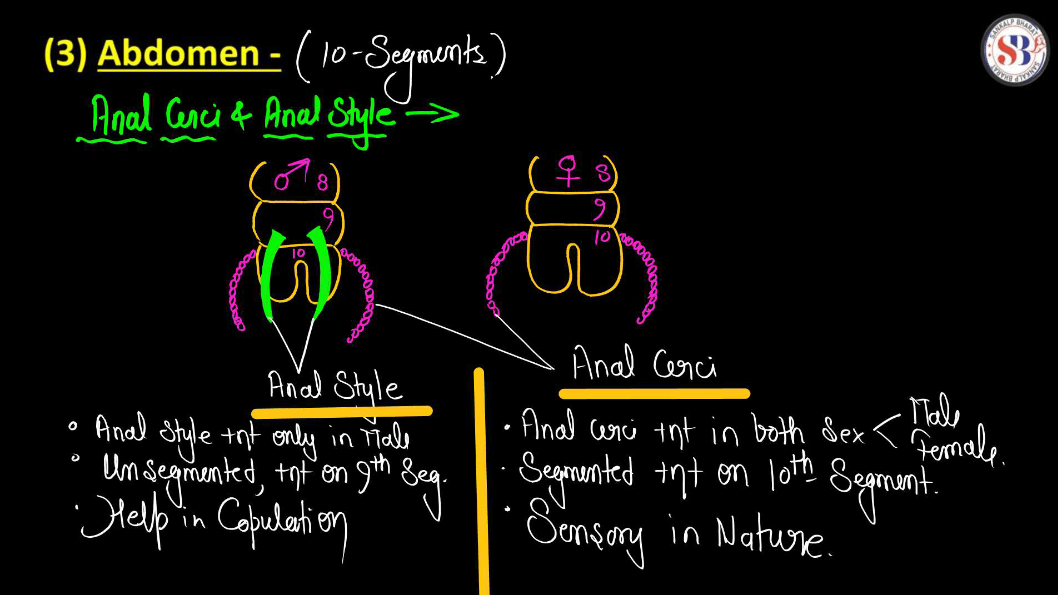
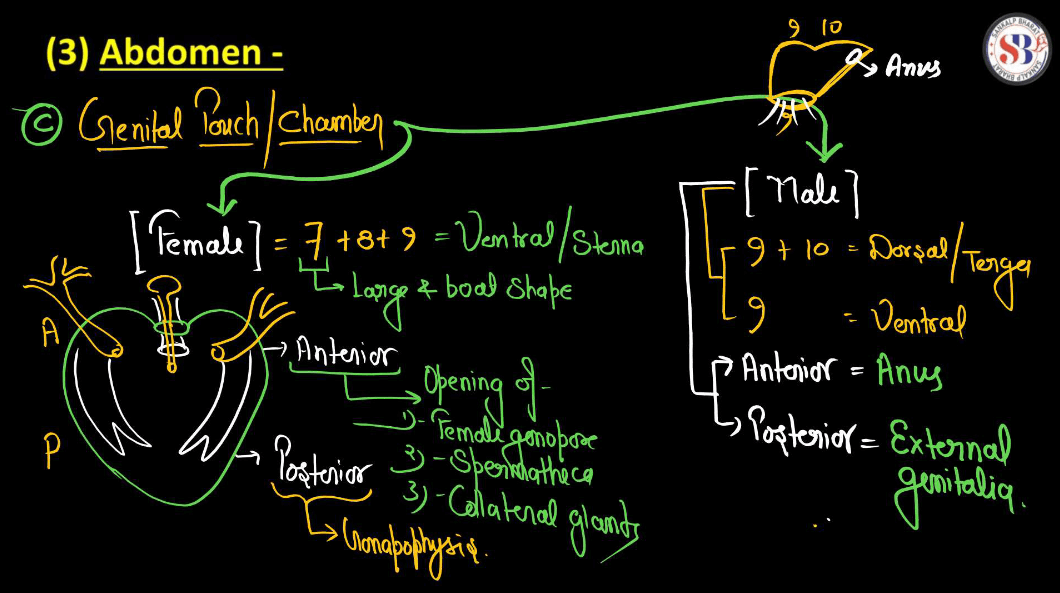
Watch the complete video on Cockroach Structure given below:

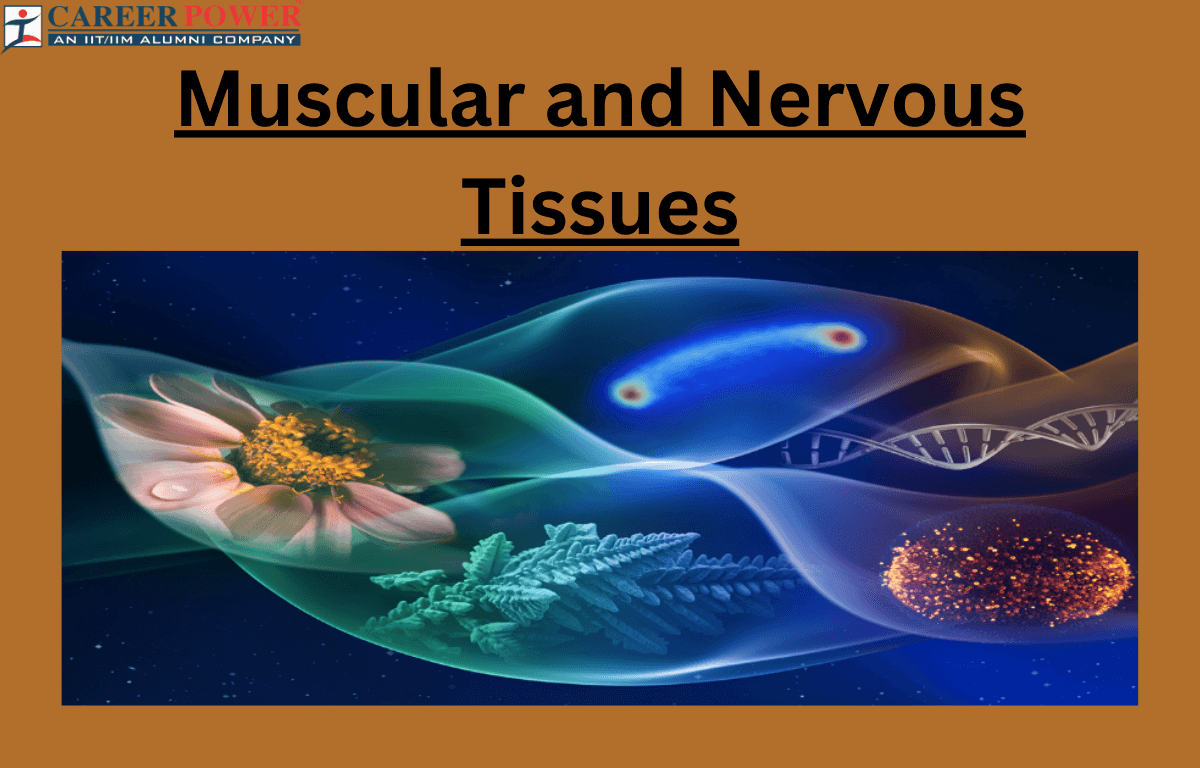

 50 Vegetables Name for Kids in English a...
50 Vegetables Name for Kids in English a...
 Food Chain: Definition, Types, Examples,...
Food Chain: Definition, Types, Examples,...
 Human Respiratory System: Definition, Di...
Human Respiratory System: Definition, Di...













